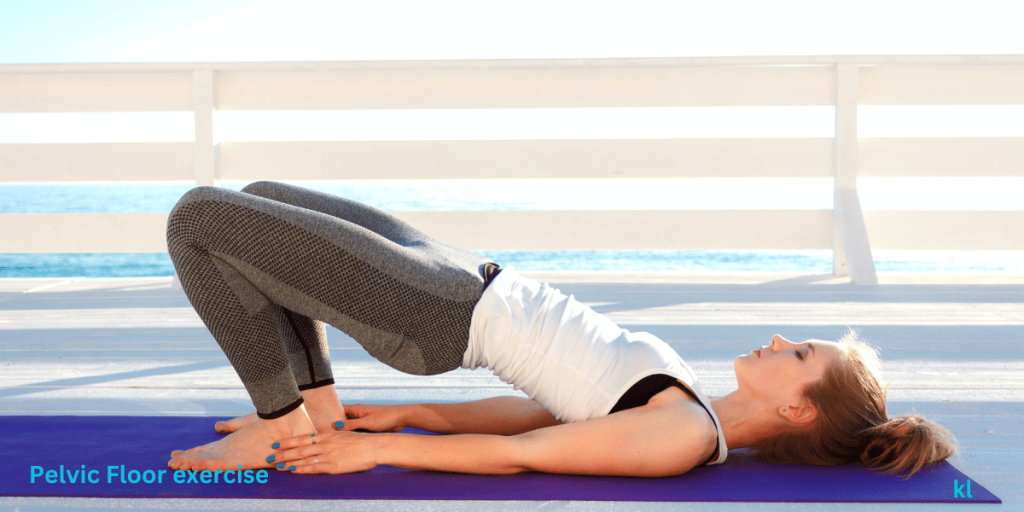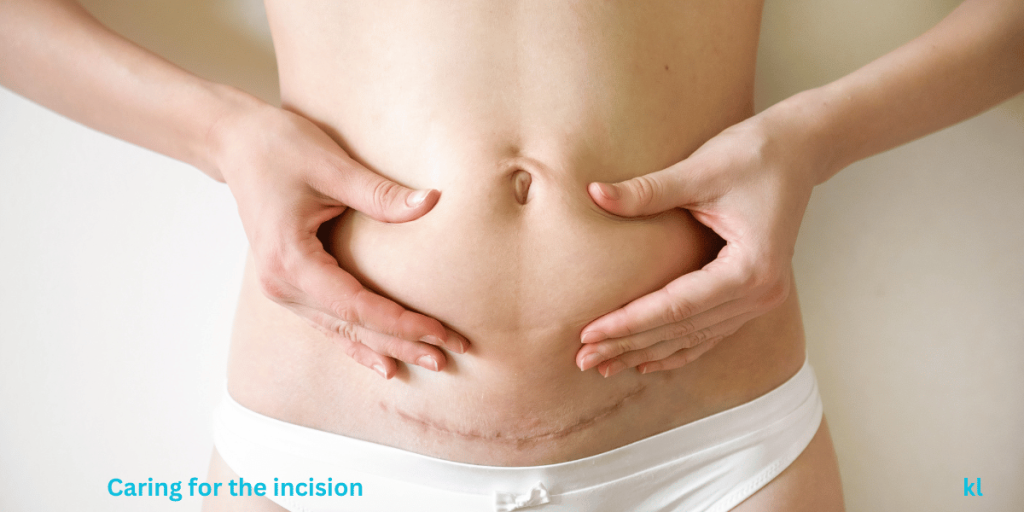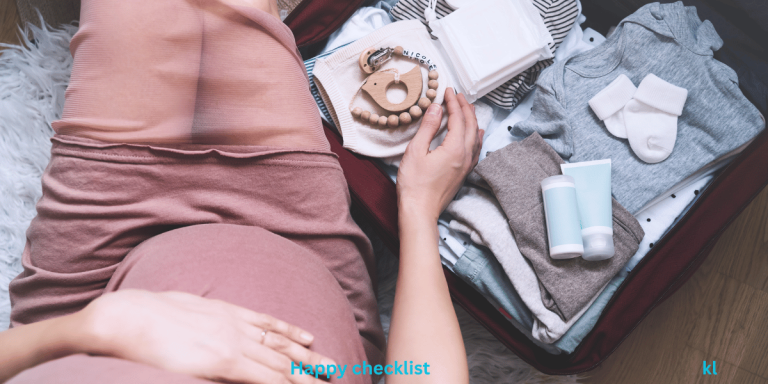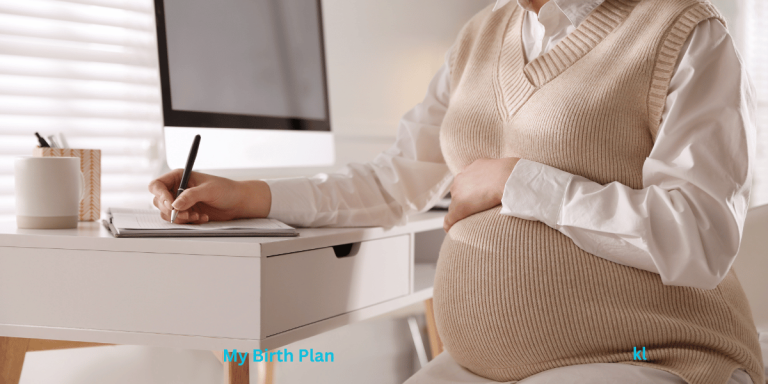Welcoming a baby into the world is an incredible journey, but the postpartum recovery process is just as important. Whether you had a vaginal birth or a C-section, understanding what to expect during recovery can help you heal with confidence and care.
Did you know that the recovery time for a vaginal birth typically takes about 6 weeks, while a C-section may take up to 8 weeks or more?
Vaginal Birth vs C-Section Recovery: The Ultimate Guide for Moms explores the differences, offers practical tips, and shows you how to take care of yourself in the first few weeks to recover faster and feel even better than before. So let’s explore!
Understanding the Postpartum Healing Process
The postpartum healing process can feel like a new world—at least it did for me! After childbirth, your body works overtime to recover from what is arguably one of the most intense experiences it can go through.
Whether you’ve had a vaginal delivery or a C-section, recovery is a journey, not a race. The key is to understand what’s happening, give your body grace, and focus on what it needs most: rest, hydration, and good nutrition.
Overview of How the Body Recovers After Childbirth
Right after childbirth, your body starts the healing process almost immediately. The uterus begins shrinking back to its pre-pregnancy size in a process called involution—sounds fancy, right?
For me, those postpartum contractions (sometimes called afterpains) were a bit of a surprise. They’re a good sign, though; it means your uterus is doing its job!
If you had a vaginal delivery, you might notice swelling, tenderness, and perhaps stitches if there was a tear or an episiotomy.
These are all normal parts of vaginal delivery recovery. On the other hand, recovering from a C-section involves healing from major surgery. You’ll be managing an incision site on top of everything else, which requires special care and a little extra patience.
No matter how you deliver, you’ll be navigating hormonal changes, fatigue, and the physical toll of childbirth. The good news? Your body is designed to heal—but it needs your support.
Key Differences Between Vaginal and C-Section Healing
The main difference between vaginal birth and C-section recovery lies in how your body heals. Vaginal delivery recovery tends to be quicker, with most moms feeling more like themselves within six weeks. However, you may deal with issues like perineal discomfort, stitches, or pelvic floor weakness.
C-section recovery, on the other hand, has a longer timeline, often taking up to 8-12 weeks. You’ll need to monitor your incision for infection and avoid heavy lifting for several weeks.
I learned the hard way that even carrying a laundry basket too soon can set you back. Trust me—lean on your support system for tasks that involve bending or lifting!
Also, knowing the differences can help you manage expectations and plan for your recovery period. Whether it’s perineal sprays for vaginal birth or postpartum binders and incision care for a C-section, having the right postpartum recovery essentials on hand makes all the difference.
Importance of Rest, Hydration, and Nutrition
I can’t stress this enough: rest is your secret weapon during postpartum healing. And no, “rest” doesn’t just mean lying down when the baby naps (though that helps too).
It also means listening to your body. Feeling extra tired? That’s your body asking for a break. Feeling lightheaded? Maybe it’s time to grab a glass of water or a snack.
Hydration plays a huge role in recovery, especially if you’re breastfeeding. Drinking enough water helps with milk production, eases digestion, and even aids in reducing swelling.
Pair that with nutrient-rich meals, and you’re giving your body exactly what it needs to heal and rebuild. Focus on foods rich in protein, iron, and vitamins—think hearty soups, leafy greens, and lean meats.
Lastly, don’t skip those postpartum check-ups. Whether you delivered vaginally or via C-section, those appointments ensure your body is healing properly and give you a chance to address any lingering concerns.
Your doctor will check things like your incision site, pelvic floor health, and overall recovery progress.
Taking care of yourself during this time isn’t selfish—it’s necessary. After all, a healthy and strong mom means more energy to care for your baby. Remember, recovery looks different for everyone, but with a little patience and self-care, you’ll get there!

Vaginal Birth Recovery: What to Expect
Recovering from a vaginal birth is a unique experience, and no two journeys are the same. Your body has just done something incredible, but it’s natural to feel a bit sore and out of sorts in the days and weeks that follow.
The key to a smoother recovery? Understanding what to expect, taking care of yourself, and knowing when to call for help. Let’s break it down step by step.
Typical Healing Timeline (6-8 Weeks)
Most moms take about 6-8 weeks to feel like themselves again after a vaginal delivery. During the first few days, you may experience soreness, especially in the perineal area if you have a tear or stitches. By week two, swelling and discomfort usually begin to subside.
Around the 4-6 week mark, you might notice that your energy levels and physical stamina are returning, but take it slow. Even after eight weeks, some mild discomfort or fatigue can linger, so don’t rush your recovery.
Remember, healing after vaginal delivery doesn’t follow a strict timeline. Some moms bounce back quicker, while others need extra time, especially if complications like significant tearing occurred. Listen to your body—it’s the best guide.
Managing Perineal Discomfort and Stitches
Perineal care after childbirth is essential for recovery. If you have stitches, you might feel pulling or tenderness in that area.
Keeping it clean and dry is priority number one. Use a peri bottle (Postpartum hygiene bottle) a lifesaver! with warm water after using the bathroom to gently rinse the area and avoid irritation.
Pain relief for stitches after vaginal birth often includes over-the-counter medications (with your doctor’s approval) and home remedies.
Ice packs or frozen pads (a.k.a. padsicles) can help reduce swelling after vaginal delivery, especially in the first 24-48 hours. Personally, I found sitz baths to be a game-changer—they’re soothing and promote faster healing.
Tips for Relieving Pain and Swelling
Managing pain and swelling doesn’t have to be complicated. A few tried-and-true methods include:
- Ice packs: Apply them to the perineal area for 10-20 minutes at a time. They’re especially helpful during the early days of recovery.
- Sitz baths: Sitting in warm water for 10-15 minutes can ease discomfort, reduce swelling, and keep stitches clean. Adding Epsom salts? Chef’s kiss.
- Witch hazel pads: These are fantastic for calming irritation and reducing inflammation.
- Pelvic floor exercises postpartum: Once cleared by your doctor, gentle kegels can improve circulation and support healing in the perineal area.

Oh, and don’t forget the importance of rest. Sitting or lying down with a supportive pillow can ease pressure on sore areas.
When to Call a Doctor
It’s normal to have some discomfort and swelling after vaginal delivery, but certain symptoms should prompt a call to your healthcare provider. Keep an eye out for:
- Persistent or worsening pain that doesn’t improve with home remedies.
- Foul-smelling discharge or significant bleeding (heavier than a period).
- Fever or chills, which could signal an infection.
- Trouble urinating or severe back pain after birth recovery.
Don’t hesitate to reach out if something feels off. Trust your instincts—if you’re worried, your doctor will want to know.
Recovery is hard work, but it’s also a time to embrace care and kindness for yourself. With patience, perineal care, and plenty of rest, your body will thank you.
C-Section Recovery: What to Expect
Recovering from a cesarean delivery can feel like a marathon, not a sprint—but trust me, with the right care and patience, you’ll cross that finish line feeling stronger than ever.
A C-section is major surgery, so it’s natural for recovery to take a bit longer than a vaginal delivery. Understanding what’s normal, how to care for your body, and when to reach out for help can make the journey smoother and less intimidating.
Typical Healing Timeline (6-12 Weeks)
Most moms start to feel better about 6-8 weeks after a cesarean delivery, but full recovery can take up to 12 weeks or longer. During the first two weeks, you’ll likely feel tenderness, swelling, and tightness around your incision.
Simple tasks like standing up or getting out of bed may feel like a workout (pro tip: roll onto your side first—it helps).
By the 4-6 week mark, you’ll probably notice significant improvements in your mobility after a C-section. That said, physical limitations after a C-section, like avoiding heavy lifting, may continue for a while.
Around week 8, many moms find they’re ready to ease back into light activities but always wait for your doctor’s green light before resuming exercise or other strenuous tasks.
Caring for Your Incision (Keeping It Clean and Dry)
Incision care postpartum is one of the most important aspects of C-section recovery. Keeping the area clean and dry is crucial for preventing infection.
Each day, gently clean your incision with warm, fragrance-free soapy water and pat it dry—no scrubbing! Afterward, let the skin air dry for a few minutes before covering it.
If you notice redness, swelling, or warmth around the incision, or if it starts leaking any unusual fluid, call your doctor immediately. These could be signs of infection.
Once your incision is fully healed, scar massage for a C-section can help with skin healing and minimize tightness. Use a gentle moisturizer or oil to massage the area in circular motions, but only after your doctor says it’s safe.

Managing Pain with Safe Medications
Pain management is a big part of cesarean delivery recovery, especially in the first couple of weeks. Your doctor will likely prescribe pain relief options, such as ibuprofen or acetaminophen, which are generally safe for postpartum moms.
Using a pillow to support your abdomen when coughing, laughing, or sneezing can also reduce discomfort.
And if you’re breastfeeding, certain positions like side-lying or football hold can take pressure off your incision while ensuring your baby latches comfortably.
Recognizing Signs of Infection or Complications
Knowing what to watch for can help you stay ahead of potential complications. Signs of infection or problems with your incision include:
- A sudden increase in pain or tenderness around the incision.
- Redness, swelling, or warmth at the site.
- Fever higher than 100.4°F (38°C).
- Pus or foul-smelling discharge from the incision.
Beyond incision-related concerns, keep an eye out for other issues like blood clots, which can show up as swelling or pain in the legs, or difficulty breathing. If you notice anything concerning, don’t hesitate to contact your healthcare provider.
Recovering from a C-section can be challenging, but it’s also an opportunity to slow down and focus on healing. With proper incision care, safe pain management, and listening to your body’s cues, you’ll be on your way to feeling stronger every day. Give yourself grace—you’ve just done something amazing!
Comparing Recovery Timelines and Physical Challenges
The postpartum recovery journey is different for everyone, and how you recover often depends on whether you had a vaginal delivery or a cesarean section.
Each comes with its unique set of timelines, challenges, and milestones. Understanding the differences can help you set realistic expectations and prepare better for your own healing process.
Energy Levels and Mobility Differences
When comparing vaginal vs. cesarean recovery times, one of the most noticeable differences is energy levels and mobility in the first few weeks.
Moms recovering from vaginal delivery often regain mobility faster, as the focus is primarily on healing the perineal area and managing general postpartum fatigue.
While getting up and moving might feel challenging at first, light activity—like short walks—can often be resumed within days.
C-section recovery, on the other hand, involves abdominal muscle healing, which can make even basic movements like sitting up or bending over feel tough in the early weeks.
Mobility after a C-section is more restricted, and most doctors recommend avoiding heavy lifting or strenuous activities for at least 6-8 weeks.
Using a postpartum girdle or support belt can provide abdominal support, making daily movements a little easier during this time.

Pelvic Floor Recovery After Vaginal Birth
For moms who delivered vaginally, the pelvic floor muscles often take a hit during childbirth. Recovery involves managing symptoms like weakness, urinary incontinence, or pelvic discomfort.
Pelvic floor recovery after vaginal birth can be aided by starting gentle exercises once approved by your doctor. Kegels, for instance, help strengthen the pelvic floor and promote healing.
Additionally, as the uterus begins shrinking postpartum, you may experience mild cramping or “afterpains.” For me, I was caught off guard by those postpartum contractions (also known as afterpains).
These are a normal part of the recovery process, as your body works to return to its pre-pregnancy state. Staying hydrated and following proper nutrition for postpartum healing can help support this process.
Abdominal Muscle Healing After a C-Section
For C-section moms, healing the abdominal muscles is a key part of the recovery process. The incision goes through layers of skin, muscle, and tissue, making it essential to give your body time to heal fully.
Around 4-6 weeks postpartum, your doctor may recommend light stretches for postpartum recovery to improve circulation and mobility. Focus on gentle moves—anything too intense can strain your healing abdomen.
It’s also worth noting that nutrition for postpartum healing is especially crucial for cesarean recovery. A diet rich in protein, vitamins, and minerals supports tissue repair and speeds up recovery. Think lean meats, leafy greens, and plenty of water!

Emotional Recovery: Adjusting to Motherhood
Becoming a mom is one of the most transformative experiences you’ll ever go through, but let’s be real—it’s not all sunshine and baby snuggles. Emotional recovery after childbirth is just as important as physical healing, and it comes with its own unique challenges.
Adjusting to this new phase of life means navigating hormonal changes, coping with physical limitations, and leaning on your support system like never before.
Hormonal Changes and Baby Blues
After birth, your body goes through a whirlwind of hormonal shifts that can significantly impact your emotions. One minute, you’re crying happy tears over your baby’s tiny fingers; the next, you’re sobbing because you can’t find your favorite comfy socks.
This rollercoaster is often referred to as the “baby blues” and affects up to 80% of new moms. The good news? These hormonal changes after birth typically level out within two weeks.
However, if feelings of sadness, anxiety, or hopelessness persist beyond that, it could be a sign of postpartum depression.
Understanding the difference between postpartum depression vs. baby blues is key to getting the right support. Remember, it’s okay to ask for help—whether that’s talking to your partner, a friend, or a healthcare professional.
Coping with Physical Limitations (Especially After Surgery)
Physical recovery and emotional health are deeply connected. When your body feels restricted—whether it’s from vaginal discomfort or recovering from a C-section—it can take a toll on your mental well-being.
For moms who’ve had surgery, coping with physical limitations like reduced mobility can make even simple tasks feel overwhelming.
The key here is to give yourself grace. Stress management postpartum might look like finding small ways to reclaim your sense of control, such as asking for help with chores, using tools like a breastfeeding pillow to reduce strain, or simply setting realistic goals for each day.
Celebrate the little wins—getting through a feeding, taking a shower, or enjoying five minutes of quiet with a cup of tea.

Tips to Promote Faster and Healthier Recovery
From building your postpartum recovery kit to incorporating exercises and stretches, here’s a handful of tips that will help promote a smoother and faster recovery.
Building a Postpartum Recovery Kit (Essentials for Both Types of Births)
A well-stocked postpartum recovery kit is like a survival pack for new moms. Trust me, having the right items at arm’s reach can make a huge difference when you’re navigating the first few weeks of recovery.
For vaginal births, you’ll want things like perineal ice packs, witch hazel pads, and a sitz bath to ease swelling and discomfort.
C-section moms need to focus more on things like abdominal support, scar-care products, and comfortable clothing that won’t irritate the incision site.
A postpartum belly binding wrap can also be a game-changer, especially if you had a vaginal delivery. It helps provide support for your abdomen and can reduce swelling while encouraging good posture as you heal.
Don’t forget the basics like comfortable pads, loose clothing, and lots of water! These essentials will make those first few days just a little bit easier.
Exercises and Stretches to Aid Healing
After you’ve gotten the green light from your doctor (usually around six weeks for a vaginal birth, and 8-12 weeks for a C-section), gentle exercises can help speed up recovery and support your body as it heals.
Exercises after vaginal delivery usually start with light pelvic floor exercises (like Kegels), which are crucial for regaining strength and reducing incontinence. These can be started soon after birth, as long as you’re comfortable.
For C-section moms, it’s important to wait a bit longer before doing any strenuous exercises. Start with gentle stretches for postpartum recovery that focus on opening up the chest, shoulders, and lower back.
Stretching helps release tension that builds up from caring for your newborn and gives your body a chance to get back into a more comfortable, aligned position. I found that things like cat-cow stretches, gentle forward folds, and light walking helped me feel more mobile as I healed.

How to Manage Breastfeeding Challenges During Recovery
Breastfeeding can be one of the most beautiful parts of motherhood, but let’s be real—it can also come with its fair share of challenges, especially when your body is still recovering.
I learned quickly that natural remedies for postpartum healing, like applying nipple creams or using breast pads, can help ease the physical discomfort that comes with breastfeeding.
If you’re struggling with latch issues or sore nipples, it’s okay to ask for help. Lactation consultants can provide invaluable guidance, especially during the first few weeks.
Keep in mind, that healing during breastfeeding isn’t just about physical pain; it’s about making sure your emotional health is supported too.
Taking breaks when needed, using pillows to support the baby during feedings, and having someone available to relieve you now and then can make all the difference.
Sleep Tips for Postpartum Recovery
Sleep is one of those things that you might think you’ll never get enough of as a new mom, and I’m here to tell you, that you’re right—at least in the beginning.
However, sleep tips for postpartum recovery can help you get as much rest as possible. One of the best ways to promote better sleep
is to nap when your baby naps. I know it feels like there are a million things to do, but trust me, nothing is more important than giving your body the time it needs to recover.
If you’re dealing with sleepless nights, try to create a calming bedtime routine. Relax with a warm bath or a cup of herbal tea. And if your baby is up often, keep things as quiet and soothing as possible, even during night feedings, to help both you and baby get back to sleep faster.
Faster and healthier recovery doesn’t just happen on its own—it’s about taking the time to care for yourself physically, mentally, and emotionally.
By building your postpartum recovery kit, adding gentle exercises to your routine, and getting support with breastfeeding, you’ll be setting yourself up for success. Take it slow, listen to your body, and don’t hesitate to ask for help when you need it. You’ve got this!
When to Seek Medical Attention
While the postpartum period can be tough, it’s important to remember that not every symptom is a cause for alarm. Some discomfort is normal, but there are key signs that indicate something more serious might be going on.
Knowing when to seek medical attention can help you catch complications early and ensure a smoother recovery. Whether you had a vaginal birth or a C-section, here’s a breakdown of red flags to watch for in both physical and emotional recovery.
Red Flags for Infections or Complications
One of the biggest fears for new moms after childbirth is infection. After all, your body’s been through a lot, and you want to make sure your healing process stays on track. Here are some common signs of complications after birth that shouldn’t be ignored:
- Fever: If you develop a fever of 100.4°F (38°C) or higher, it could be a sign of infection. Whether it’s related to your incision site or your uterus, this is something that warrants a call to your doctor.
- Increased or Unusual Pain: Some pain during recovery is normal, but if you experience severe pain that doesn’t improve or worsens with time—especially around your incision or perineum—it could be a red flag.
- Heavy Bleeding: Postpartum bleeding (lochia) is normal, but if you soak through a pad every hour or pass large clots, you may be dealing with a complication that needs immediate attention.
- Swelling, Redness, or Pus Around the Incision: For C-section moms, watch out for incision infection signs, like redness, warmth, swelling, or pus around the scar. These could indicate an infection that needs antibiotics to prevent it from spreading.
- Painful or Difficulty Urinating: This could be a sign of a urinary tract infection (UTI), especially if you experience a burning sensation when you pee or have trouble going.
- Shortness of Breath or Chest Pain: While rare, these could be signs of more serious conditions, like a blood clot, and require immediate medical attention.
It’s always better to err on the side of caution and reach out to your doctor if you notice any of these symptoms. Early intervention can often prevent more severe issues down the road.

Postpartum Depression and Anxiety Signs
Emotional recovery can be just as complicated as physical recovery, and postpartum depression and anxiety are more common than we realize.
The emotional health postpartum is often overlooked, but it’s just as important to keep an eye out for signs of mental health struggles as it is for physical ones. Here are some key signs of postpartum depression and anxiety:
- Persistent Sadness or Hopelessness: Feeling down or tearful is common in the early days, but if these feelings don’t go away or become more intense, it could be a sign of postpartum depression.
- Extreme Anxiety or Panic: Feeling anxious is normal when you’re adjusting to life with a newborn, but if you’re constantly worried, experiencing panic attacks, or feel out of control, these could be symptoms of postpartum anxiety.
- Difficulty Bonding with Your Baby: A lack of connection or overwhelming feelings of indifference toward your baby can also be a sign of depression. It’s important to talk to someone if you’re feeling disconnected.
- Changes in Sleep or Appetite: Major changes in appetite, either eating too much or not enough, along with insomnia or sleeping excessively, can also be indicators of postpartum depression.
- Thoughts of Harming Yourself or Your Baby: If you have thoughts of self-harm or harming your baby, this is an emergency, and you need to seek immediate help. Call your healthcare provider, a mental health professional, or a support helpline right away.
Many moms feel ashamed or scared to admit they’re struggling emotionally, but you’re not alone. Postpartum mental health issues are common, and there’s no shame in asking for help. You deserve to feel supported and cared for as you adjust to life with your baby.
What to Do If You Experience These Signs
If you notice any of the above red flags, don’t hesitate to reach out to your healthcare provider. When in doubt, make the call.
Trust your instincts and get the help you need, whether it’s antibiotics for an infection, therapy for postpartum depression, or guidance on caring for your body and mind as you heal.
Your body’s recovery is a marathon, not a sprint. Taking care of yourself physically and emotionally is essential, and you’re never alone on this journey. If you need help, it’s always okay to ask for it.

Recovering from childbirth is a unique journey for every mom, whether you’ve had a vaginal delivery or a C-section.
By understanding the key differences, taking care of your body, and seeking support when needed, you can heal more comfortably and focus on the joys of motherhood.
Remember, every step you take toward recovery is a step closer to feeling your best again! If you’re preparing for postpartum or currently recovering, don’t hesitate to reach out to your healthcare provider for guidance and reassurance.







